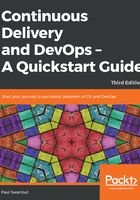
Too many cooks
As you build your list of engaged contributors you may well encounter a positive problem—you simply have too many people who want to be involved. In some respects, this is a good thing—over-subscription is a nice problem to have as you will be able to capture more valuable data—however this can cause problems—but things can get disorganized and noisy very quickly if you don't manage this part of the process.
If you do have over-subscription, rather than dropping people from the list, you should consider running multiple sessions. We'll cover the format of the session(s) in more detail later but suffice to say they can turn out to be very interactive with a high degree of active participation. As such, I would advise you try and keep the numbers for each session down to a manageable level, otherwise you will end up with too many voices and opinions generating too much noise and too many discussions going off at tangents to each other. You should also ensure that each session has an even mix of individuals from different parts of the business (for example, don't just run a developers session followed by an operations session followed by a project managers session—mix things up) as you want input from a broad spectrum.
You will also encounter a physical challenge whereby you need to be in two or three places at once—unless you have mastered the art of cloning or astral projection, that's simply not possible. You should therefore run the sessions sequentially rather than concurrently thus giving yourself a gap to rest and compile the data captured. If this isn't possible, then you should consider enlisting one or more co-facilitators you feel have the same goals, drives, and passion you do in relation to revealing the elephant. A word of warning here: you all need to be very aligned in your approach; otherwise, you may skew the data.
To all intents and purposes the preceding equates to this: you need to engage and include as many different people as possible who are actively involved in the process of defining, building, testing, shipping, and supporting software within your organization. The wider the net is cast the more relevant the information and data you will catch, so to speak.
Not only is the way in which the investigation is to be conducted and who is involved very important, it is also vitally important that you ensure the environment is set up correctly to allow for those attending to be open, transparent, and more importantly honest—this will also encourage appropriate behaviors to surface. We'll be looking into behaviors in more detail later, but for now let's concentrate on the aforementioned three key areas.